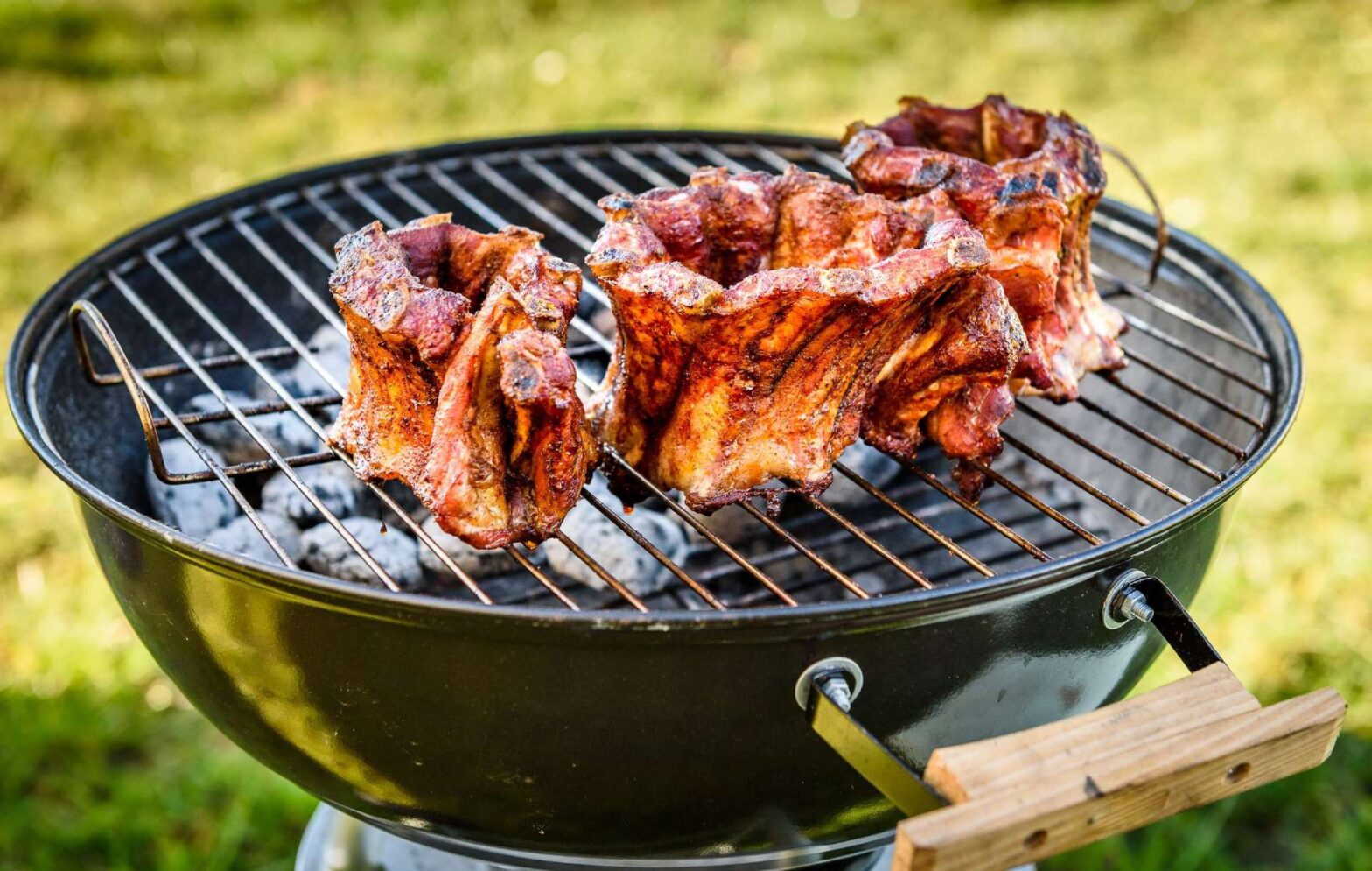What is the best way to cook perfect, tender ribs on the grill? How much heat should you use and how often should you turn the meat?
No doubt, these are the top questions I get asked when I talk to family and friends about grilled ribs. Today, I finally took some time to answer them.
Let us dive deep into grilling and flipping ribs so that—when you are done reading what I have to say—you will know exactly how to grill them to perfection.
Should you flip ribs when grilling them?
Coat the ribs with the rub of your choice and rest them for 30 minutes. Preheat your grill, setting it up for indirect heat. Place the ribs bone side down in the center of the grill and cook them with the lid on for 1½ to 2 hours. Some cooks do not flip the ribs at all; others flip them once or twice.
The trick to grilled ribs is to cook them over indirect heat, which means low and slow. To do this, set your grill up for indirect heat, which I’ll explain in a moment, and place the ribs far away from the flames or the coals.
This way, you are basically slow-roasting the ribs in a setup not that different from the convection oven in your kitchen. The ribs will be cooked evenly, no matter if you flip them or not.
Flipping, at least in my book, is something that’s only necessary if you are cooking the ribs over direct heat. (Otherwise, they will burn on the bottom and remain raw on the top.)
In contrast, indirect heat allows you to leave the meat alone. If you want your ribs to have grill marks on both sides like at a ribhouse, you can sear them for 20 seconds on each side before removing them from the heat.
Getting Indirect Heat on a Charcoal Grill
For indirect heat on a charcoal grill, light the coals in your chimney starter, letting all of them ignite properly.
Once the coals are red hot, which takes 15-20 minutes, toss them into the pit and bank them in two piles, one to the left and one to the right, leaving the middle charcoal-free and placing an aluminum drip pan on it.
(Some grills come equipped with side baskets that make it easy for you to set up indirect heat. If that’s your grill, all you need to do is fill the side baskets with the glowing coals and place a drip pan between them.)
Wait another 5-10 minutes for the coals to start ashing over until you get grilling. Once you do, remember that you must replenish the charcoal roughly every hour.
Since a rack of ribs takes about two hours to cook, you will need two batches of charcoal for the job. On the thirtieth minute of cooking, light the second batch of charcoal in your chimney starter so you can throw it in the pit on hour one.
If you are grilling multiple batches of ribs that day, repeat the process for each batch.
Setting Up Your Gas Grill for Indirect Heat
Meat cooked on a gas grill will never be as flavorful as meat grilled over charcoal or firewood. But, as you’ll see in a moment, nothing beats the convenience of using a gas grill, whether for direct or indirect heat.
For indirect heat on a gas grill, preheat the appliance with the far left and far right burners on medium, leaving the center burners turned off. Cook the ribs in the middle where there is no flame and the cooking temperature is between 200°F and 250°F.
How to Tell When the Ribs Are Done
The ribs are done when they reach an internal temperature of 145°F as measured by a meat thermometer, the USDA’s Food Safety & Inspection Service says.
When the ribs are done, remove them from the heat and let them rest for 3 minutes before slicing and serving them.
To determine if the ribs are done without a meat thermometer, wait until they are mahogany brown and pull back ¾ of an inch from the bones.
The rack of ribs should flex when you lift it, and a sharp knife or toothpick should penetrate the meat between any two bones with little resistance.
That said, if you like your ribs chewy or slightly crunchy, wait until they are done and sear them over direct heat for a minute or two per side before removing them from the heat. Do not do this for too long, though, or they’ll dry out—and come out as inedible as a part of leather shoes.
Grilling Ribs: Yay or Nay?
Traditionalists will be happy to tell you that ribs should never be cooked on the grill and that the authentic way to prepare them is in the smoker.
Well now, I salute smoky, fall-apart-tender ribs on any day, I can tell you that. But I just do not agree with the dogma. I love this cut of meat way too much to choose sides, and choose to enjoy it all the ways I like it.
Skilfully grilled using the techniques I have presented to you above, a rack of ribs can be crispy on the outside and juicy on the inside (whether we’re talking beef ribs, pork baby back, or pork spareribs; Kansas-style wet-rub or Memphis-style dry-rub).
In Summary
With grilled ribs, it’s not so much how often the rack is turned as the intensity of the heat at which it’s cooked. If you cook them low and slow, turning the meat becomes a matter of preference and stops being a requirement.

